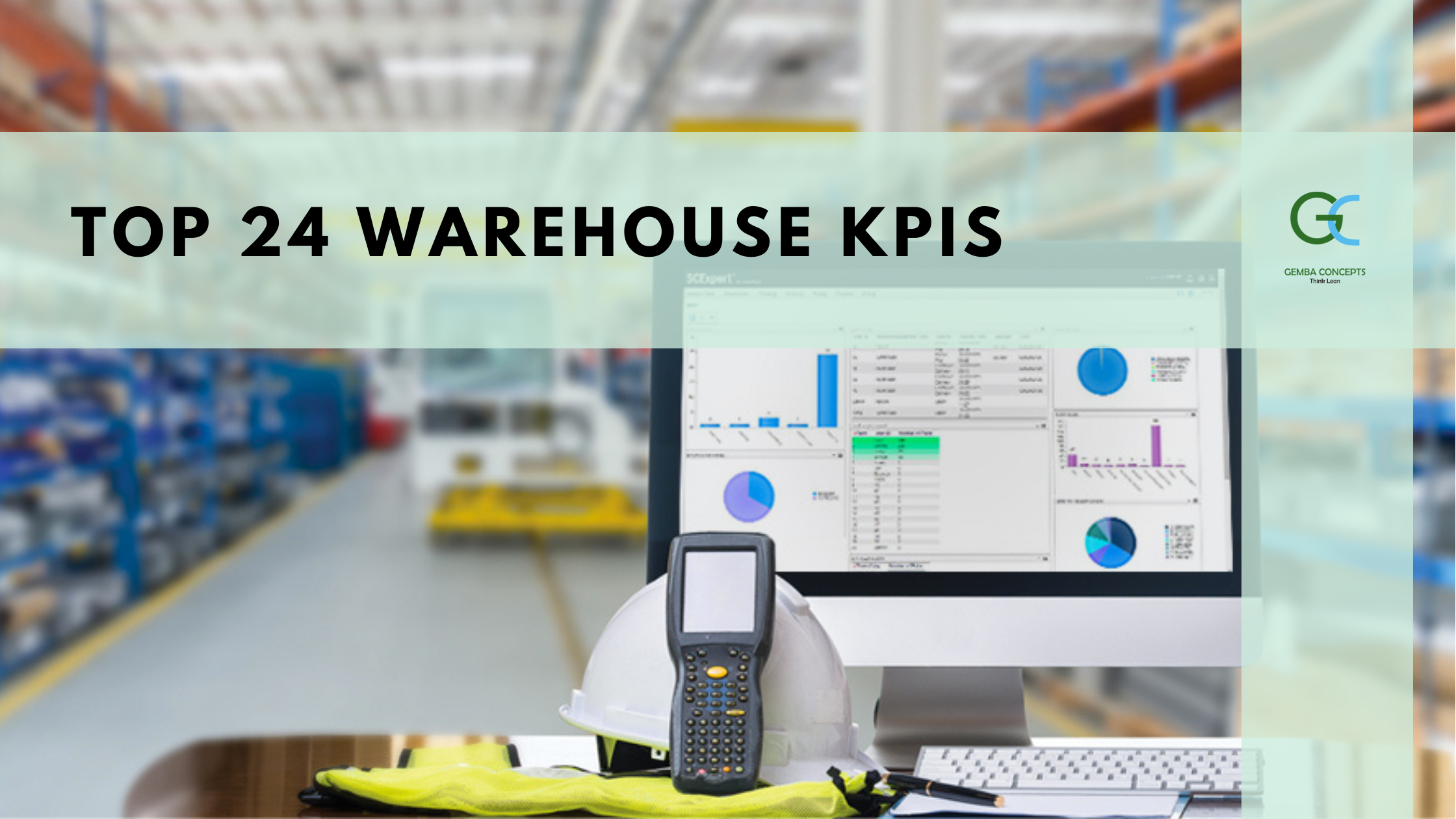Top 24 Warehouse KPIs
Receiving
Among the most critical warehouse KPIs are the metrics that measure receiving performance. Warehouse operations begin with this process, and any inefficiencies here will snowball through all the subsequent processes.
Warehouse KPI metrics that correspond to the receiving process are:
1. Cost of Receiving Per Receiving Line:
The expense that the warehouse incurs on the receiving process of each receiving line. This includes handling costs as well.
2. Receiving Productivity:
Determined in terms of labour by measuring the volume of goods received per warehouse clerk per hour.
3. Receiving Accuracy:
Percentage of accurate receipts, i.e., the proportion of correctly received orders against purchase orders.
4. Dock Door Utilization:
Percentage of how many of the total dock doors were utilized.
5. Receiving Cycle Time:
The time taken to process each receipt.
These warehouse KPIs help managers identify any lapses in receiving and avoid a chain reaction of inefficiencies down the process line.
Catching inefficiencies, such as a long receiving cycle caused by busy dock doors, can reduce deficiencies as early as in the receiving stage.
Putaway
Once goods are received, the process of putaway begins with placing each item at a designated location selected for most convenient retrieval.
Effective putaway ensures a smooth picking process, thus significantly reducing lead time.
Here are some of the important warehouse KPIs that you must track to measure the efficiency of the putaway process:
6. Putaway Cost Per Line:
Expenses incurred for putting away stock per line, including labor, handling, and equipment costs.
7. Putaway Productivity:
Volume of stock put away per warehouse clerk per hour.
8. Putaway Accuracy:
Percentage of number of items put away accurately at the designated location.
9. Labor and Equipment Utilization:
Percentage of the labor and material handling equipment utilized during the put-away process.
10. Putaway Cycle Time:
Total time taken during the entire process of each put-away task.
Evaluating the putaway through these warehouse KPIs gives you a clear picture of potential inefficiencies in the process. Recognizing snags such as inaccuracies or scarcity of labor will help you to optimize and streamline the process.
Storage
Whether your warehouse is dependent on storing goods manually or uses AS/RS (Automated Storage and Retrieval System), you still need to measure efficiency. Here are some important warehouse KPIs to measure storage efficiency:
11. Carrying Cost of Inventory:
The cost of storage over a particular span of time, including the cost of inventory, capital costs, service costs, damage costs, and costs of obsolescence. The longer the stock stays in storage, the higher the cost to the warehouse.
12. Storage Productivity:
Volume of inventory stored per square foot.
13. Space Utilization:
Percentage of space occupied by inventory out of the total space available for storage.
14. Inventory Turnover:
The number of times the entire inventory passes through during a period of time.
15. Inventory to Sales Ratio:
Measure of stock levels against sales. This helps managers identify monthly increases in inventory against falling sales.
These storage & inventory management KPIs are of immense value when it comes to maximizing storage utilization and reducing cost of inventory. For example, a low inventory turnover spurs you to track down a reason and helps you improve inventory management.
Pick & Pack
The process of picking & packing directly impacts lead time. Greater accuracy in picking means shorter lead time.
Picking in the right order decreases the rate of order return and increases customer satisfaction.
16. Picking and Packing Cost:
The cost incurred per order line, including handling, labeling, relabeling, and packing.
17. Picking Productivity:
The number of order lines picked per hour.
18. Picking Accuracy:
The percentage of orders picked and packed without error.
19. Labor and Equipment Utilization:
The percentage of labor & pick/pack equipment out of the total labor and equipment utilized during the process.
20. Picking Cycle Time:
Time taken to pick each order.
Distribution
As the roles and responsibilities of warehouses expand with the growth of always-on supply chain, the added function of distribution exerts additional pressure on warehouse management. Here are some warehouse KPIs relevant to distribution:
21. Order Lead Time:
The average time taken by an order to reach the customer once the order has been placed. This is one of the most crucial KPIs for warehouses and distribution centers.
22. Perfect Order Rate:
Number of orders the warehouse delivered without error. It indicates the success rate of the warehouse/distribution center.
23. Back Order Rate:
The rate at which orders are coming in for items that are out of stock. There are situations wherein unexpected spike in demand causes this. However, if this rate is consistently high, it is an indication that there are lapses in planning and forecasting.
These distribution KPIs will help you diagnose underlying problems.
For example, a high back-order rate indicates that a warehouse or distribution center isn’t stocking the appropriate inventory volumes. In this case, the problem lies in understanding consumer behavior and better forecasting demand so as to properly set inventory levels.
Reverse Logistics
The returns and reverse logistics is another crucial process where warehouse KPIs need to be measured. In most cases, the always-on warehouse is exposed to this process, and it’s essential to measure its efficiency and effectiveness.
Here is a warehouse KPI that should not be ignored if you are exposed to this process:
24. Rate of Return:
The rate at which goods, once sold, are being returned. This is most effectively used when segmented by reason for return.
This is one of the top warehouse KPIs that can help the warehouse/operations manager diagnose the exact reasons for rising warehousing costs and customer dissatisfaction, as it lets you dig into the reasons for returns.


